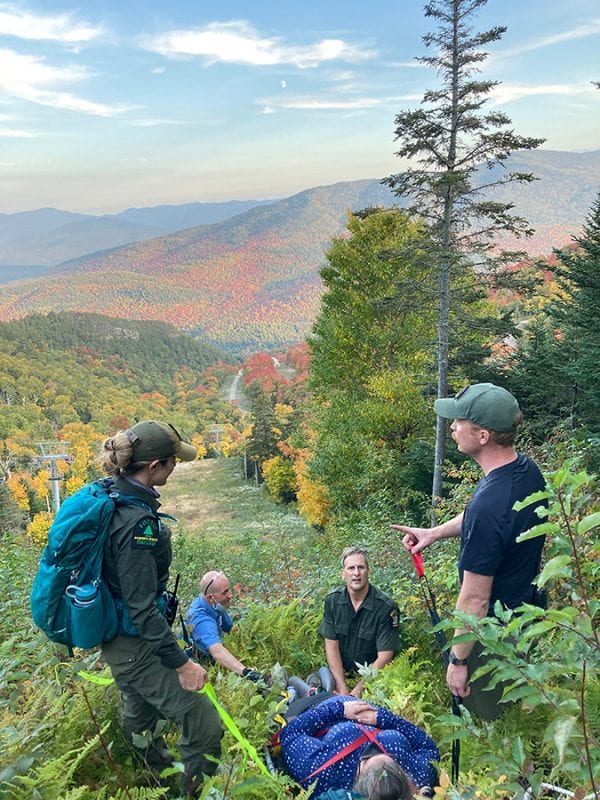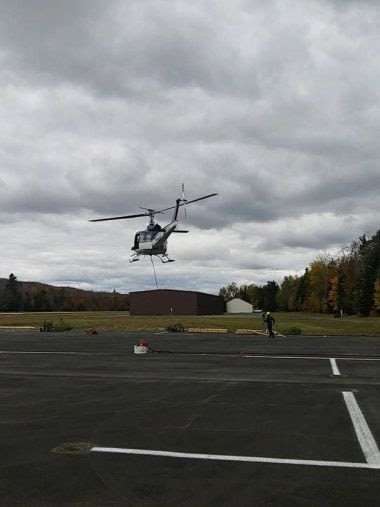Many would think that an increase in hikers would be a great addition to the Adirondacks. But, that may not be true. With the increase in hikers, there is an increase in the amount of search and rescues taking place within the Adirondacks. As more people begin to venture into the woods to hike, there is a greater portion of individuals who do not properly prepare for their hikes. Therefore, even if someone is going on a small day hike that seems relatively easy, it is essential to always be prepared for the worst. Preparation is essential to safely and successfully hiking within the Adirondacks.

The Adirondacks has seen a record increase in the number of searches and rescues within the past year. Because of the pandemic, more people went outdoors which resulted in a significant amount of people being unprepared for the conditions and needing help. For example, in 2019 there were 216 search and rescues while in 2020 there were 285 search and rescues(Record Number of Search and Rescues). Obviously, some of these search and rescues are due to freak accidents like breaking an arm or leg. However, many of these search and rescues are preventable, as many of them are due to the unpreparedness of hikers. The Adirondacks saw an increase in the number of hikers who solely relied on their smartphones to guide them for light or navigation. Using a smartphone when hiking is not a proper navigation or light source as many areas within the Adirondacks loose cell coverage causing phones to be unable to find location. This is why it is essential for individuals to bring compasses and maps when hiking. Not only that, many hikers within the Adirondacks have underestimated the duration and difficulty of many of the hikes within the Adirondacks. This has caused people to become stuck in the dark, get lost, and be in need of a rescue mission. For example, a forest ranger noted that, “We’re seeing a lot of people who are calling because they have been overcome by darkness, and they did not have the proper equipment to see their way out of the woods”(Record Number of Search and Rescues). As we can see, unprepared hiking is a very common issue within the Adirondacks which is leading to an increase in search and rescue missions.

Search and rescue efforts that are related to being unprepared can be extremely preventable. Essentially, if hikers learn to be prepared with the necessary equipment and materials before venturing into the woods, it would significantly reduce the number of rescues. The weather and conditions within the mountains can change instantly so it is essential that hikers pack for the unexpected. Some key aspects to ensure safety and preparedness when hiking include: multiple clothing layers to ensure warmth, a map, a compass, waterproof clothing, headlamp, extra nutrition, and extra water. There are additional resources that can be important depending on the circumstances. However, if every hiker brought the necessary equipment listed above then there would be a significant reduction in search and rescues. Therefore, it is apparent that hikers must be prepared when hiking in the Adirondacks.
Literature Cited:
“Hike Smart NY.” HIKE SMART NY – NYS Dept. of Environmental Conservation, www.dec.ny.gov/outdoor/28708.html.
“Rangers Respond to Lost, Injured Hikers and Hunters -.” The Adirondack Almanack, 20 Oct. 2021, www.adirondackalmanack.com/2021/10/rangers-respond-to-lost-injured-hikers-and-hunters.html.
“Record Number of Search and Rescues This Year.” Adirondack Explorer, 26 Oct. 2020, www.adirondackexplorer.org/stories/record-number-of-search-and-rescues-this-year

I enjoyed reading your blog, Morgane! I do think that the Adirondack council should emphasize that the hiking in the Adirondacks requires adequate preparation and by no means is simple. Moreover, maybe having easily accessible information on hiking in the Adirondacks could help people, that are not used to hiking, prepare better.
I really liked the data you provided to further cement your claims that record numbers of people were needing outside assistance on their hikes. I thought your points about smartphones were also helpful in explaining one reason why this increase has occurred. I recall a search and rescue from four or five years ago in the High Peaks. region when a new hiker missed the summit of a mountain and hiked right off the back side of the peak where there was no trail. He was alone and ended up missing for three days before a helicopter finally spotted him. I think that in general, people. underestimate how dangerous the mountains can be and it’s important to review your trip and plans with others and prepare properly in order to truly enjoy and stay safe in the mountains.
This was a very interesting read, Morgane! I found it interesting that people are relying on their smartphones more to navigate the outdoors but search and rescue operations are increasing. I guess the only issue that is contributing to this problem is that there is a lack of consistent cellular connection. What about improving cellular range? What makes it so difficult for cellular connection to reach the outdoors, especially the Adirondacks? What are the benefits of increasing range and what are the potential drawbacks?